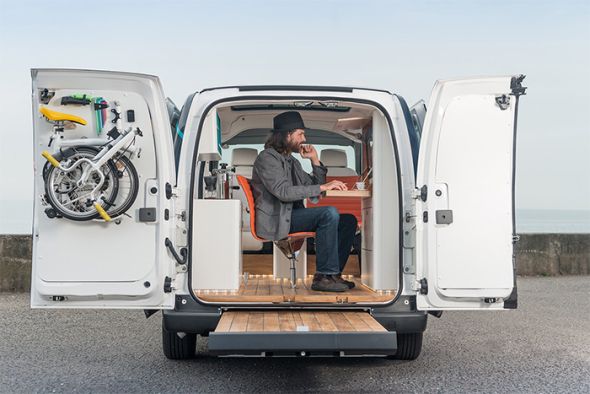The closer we approach the year 2020, the more redundant the office cubicle is becoming. Our attitudes about why, how, and where we work are changing.

Workplace culture is changing how businesses operate and is driving the demand for alternative workspaces. The closer we approach the year 2020, the more redundant the office cubicle is becoming. Our attitudes about why, how, and where we work are changing. Unlike previous generations, it can be argued that the workforce of today and the future place a higher premium on self-determination and flexibility than higher salaries.
If you observe the labour market demand for businesses which acknowledge the need to offer workers flexibility in working hours and locations, you’ll realise that it has never been higher. As a result, those companies quick to adapt will attract the best talent. However, the challenge for many businesses is the lack of know-how and leadership that enables the effective transformation of business practices through rethinking performance measures, encouraging operational open-mindedness, embracing cultural diversity, and updating communication channels. All which are essential for responsive organisation.
Businesses which tend to have structures that are non-hierarchical and dynamic enough to take advantage of technologically enabled work management platforms have a greater chance of tapping into the resource niche that many millennials are seeking to be a part of.
Several companies are already making a success of this by empowering their workforce with the right technological solutions including project management software such as Trello, Slack, or Asana which enable remote working and collaboration and consequently minimise the need for conventional office based work routines. Applications such as Toggl which are great time tracking tools with an ability to create timesheet reports have completely changed the game in terms of making it possible to work while on the move. What is really important to note is that the way in which we implement a different management system should also be complemented by a psychological adoption of new ways of thinking alongside practical and innovative ways of doing things.
According to a study conducted by Virgin Media Business, more than half of all employees will be working from home in the next several years. A Polycom study also revealed that more than 30 million Americans currently take part in flexible working or work from home at least once a week and some 69 percent of Chinese workers are already working remotely. All this suggests there is a massive need for alternative workspaces.
To put things into perspective, it’s essential to shine a spotlight on ethonomics and the sharing economy in light of the growing trend and its implications not only on workspace interior design, but also architectural and industrial design. It is apparent that worker and consumer expectations are shifting, and this in turn is disrupting the traditional approaches to the way in which business is conducted. It is therefore critical that changes be brought to design thinking as far as creating new workspaces that align with this shift.
Many proponents of alternative work practices and workspaces positively make the argument that the workforce participating in this sector tends to be more focused on tasks and don’t feel restricted by certain workspace designs.
What the marketplace currently demands is a combination of integrative thinking, fresh design approaches, and optimal use of technology, all within a framework which factors in humanistic ethics and values.
One of the most notable trends which has come about as a result of the socio-cultural changes driving this new workplace economy is the rise of multipurpose spaces. The old distinctions attributable to assigning single purpose functions to specific architectural spaces are becoming blurred.
Alongside the architectural and industrial design sectors, significant changes are also taking place in manufacturing. Workspace design now incorporates new forms which are altering our aesthetics and the way we perceive utility. It’s no longer just a matter of buildings or other sites being designed or modified to address these changes, it is right down to the products being introduced in the market. We are seeing an increase in new product designs in all areas including some unexpected ones such as automotive industry with companies such as Nissan experimenting with new ways of designing their cars for purpose. Ultimately, the aim is to provide solutions to help increase productivity in a work world undergoing fundamental systemic changes.
‘Hot desking’ which takes after the business model popularised by companies dominating the sharing economy such as Airbnb, and which essentially allows individuals to participate in the short-term space letting market is experiencing a boom. Vrumi, a platform which connects professionals to homeowners who have available rooms within specific locations for temporary occupation is one such player. Parties involved who may initially have concerns about safety are often surprised at how effective peer reviews are as a standard feedback feature which promotes transparency and provides a blanket of security especially when making dealings in today’s social-driven world.
Other companies, the likes of Peerspace, PivotDesk, LiquidSpace, and even Google with its Google Campus offering in London, are already established players in the market of renting fully equipped workspaces for periods as minimal as a couple of hours to on-the-move workers, which is quite ideal for freelancers or startup employees who may not have the resources to take up a conventional lease with a regular estate agent.
A workspace is meant to foster creativity, encourage collaboration, or productive interactions. And many proponents of alternative work practices and workspaces positively make the argument that the workforce participating in this sector tends to be more focused on tasks, because they do not have to deal with the burden and monotony of typical office routines, or feel restricted by certain workspace designs. So, if your business is considering adopting a new approach to working practices in order to increase productivity, cut costs, or simply provide more flexible means of working for the benefit of business and employees alike, looking into alternative workspaces might just be the way forward.